Richard Edes Harrison’s chart of the ocean floors: one of the first serious commercial attempts at underwater mapping.
The Floor of the World Ocean
$975
1 in stock
Description
This 1961 map by famed cartographer Richard Edes Harrison is based on some of the most pioneering research of the 20th century. Harrison depicts the world’s last cartographic frontier: the floor of the Earth’s great oceans. The map was published as a supplement to the Annals of the Association of American Geographers (Vol. 51), and is an enhancement of an earlier version drawn by Harrison in 1959. Harrison’s decision to redraw the chart after only two years reflects how rapidly our understanding of submerged topography was developing during the late 1950s and early 1960s.
The incredible progress hinged on the oceanographic research of two Columbia University geologists, Dr. Bruce Heezen (1924-1977) and Dr. Henry Menard. Their pioneering work would soon be augmented and, in many ways, completed by another pioneering oceanographer, Marie Tharp (1920-2006). In 1976, Tharp and Heezen would publish the definitive topographic chart of the ocean floors, accomplishing the last significant milestone of tellurian cartography. Even though this final mapping would still be more than a decade in the making when Harrison published this chart, it was one of the most important and influential charts for visualizing and disseminating the scientific results thus far.
Produced at a scale of 1:50.000.000, the map essentially shows the world from the perspective of the Antarctic. In cartographic terms, this is known as a Briesmeister Elliptical Equal-area projection, although Harrison seems to have centered it slightly to provide the most comprehensive view of the underwater landscape. This projection warps the landmasses to something almost unrecognizable – certainly for those of us with a Mercator projection as the mental template. Australia remains somewhat familiar, but Asia is split down the middle, and South America exists only as two slivers at the bottom of the map. Yet the new perspective also allowed the topography of the southern oceans to stand out more clearly. This was of great importance, as one of the most mind-blowing submarine discoveries was about to be announced.
Working first as Heezen’s assistant, Marie Tharp became increasingly critical of established geological theories on the Earth’s formation, and she rejected the notion that tectonic shifting was due to a gradual expansion of the planet. Revisiting and revising the data allowed Tharp to identify an enormous rift valley in the North Atlantic and, shortly after that, demonstrate the existence of a ‘Mid-Oceanic Range’: a single coherent geological entity that stretches around the globe. While this ‘Mid-Oceanic Range’ had not yet been established as fact in 1961, soon nobody would disagree with Tharp’s radical idea.
We sense the first inklings of Tharp’s great discovery on this map. Dramatic swathes of open ocean have accurate topographic profiles associated with them. Harrison shows us that the technology and know-how are there; all that is needed is the time to collect and collate the gargantuan amounts of sonar data required to produce a complete and accurate map of the ocean floor. Fifteen years after this map was published, that great goal was finally accomplished. Harrison’s map was an essential stepping-stone on that path.
Cartographer(s):
Richard Edes Harrison (1901-1994) was an American scientific illustrator and mapmaker who primarily worked as the in-house cartographer for Fortune magazine and a cartographic consultant at Life. Many of his maps were produced within the context of the Cold War and the rise of an American military-industrial complex. He has been credited for and accused of playing a significant role in “challenging cartographic perspectives and attempting to change spatial thinking on the everyday level during America’s rise to superpower status.” He continues to divide waters even thirty years after his death.
In 2012, Timothy Barney, an assistant professor of Rhetoric at Richmond University, published an article in which he interprets Harrison’s motivations in his cartographic output. In the abstract of the article (published in Rhetoric & Public Affairs Vol. 15, No. 3: 397–434), Barney states:
“Air-age globalism was a discursive phenomenon throughout the development of World War II that accounted for the rapid “shrinking” of the world through air technologies and the internationalization of American interests. Cartography became air-age globalism’s primary popular expression, and journalistic cartographers such as Richard Edes Harrison at Fortune magazine introduced new mapping projections and perspectives in response to these global changes. This essay argues that Harrison’s mapping innovations mediate a geopolitical shift in America toward a modern, image-based internationalism. Through recastings of “vision” and “strategy,” Harrison’s work offers an opportunity to assess the rhetorical tensions between idealism and realism in midcentury cartographic forms and the larger spatial and perceptual challenges facing U.S. foreign policy during its rise to superpower status.”
Regardless of the motivations attributed to him, Harrison’s charts were conducive to broadening how Americans viewed the world and its mapping. His charts built a crucial bridge, not just from the science to the public, but from the raw data to a tangible final result. Harrison’s maps have become highly sought-after collectors’ items despite their relatively young age.
Condition Description
Good condition, stamped "Duplicate" in the lower right. Slight loss near Greenland, repaired.
References
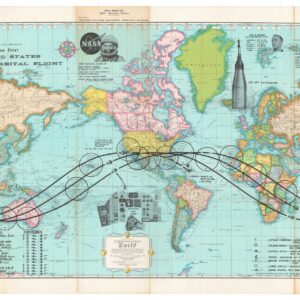
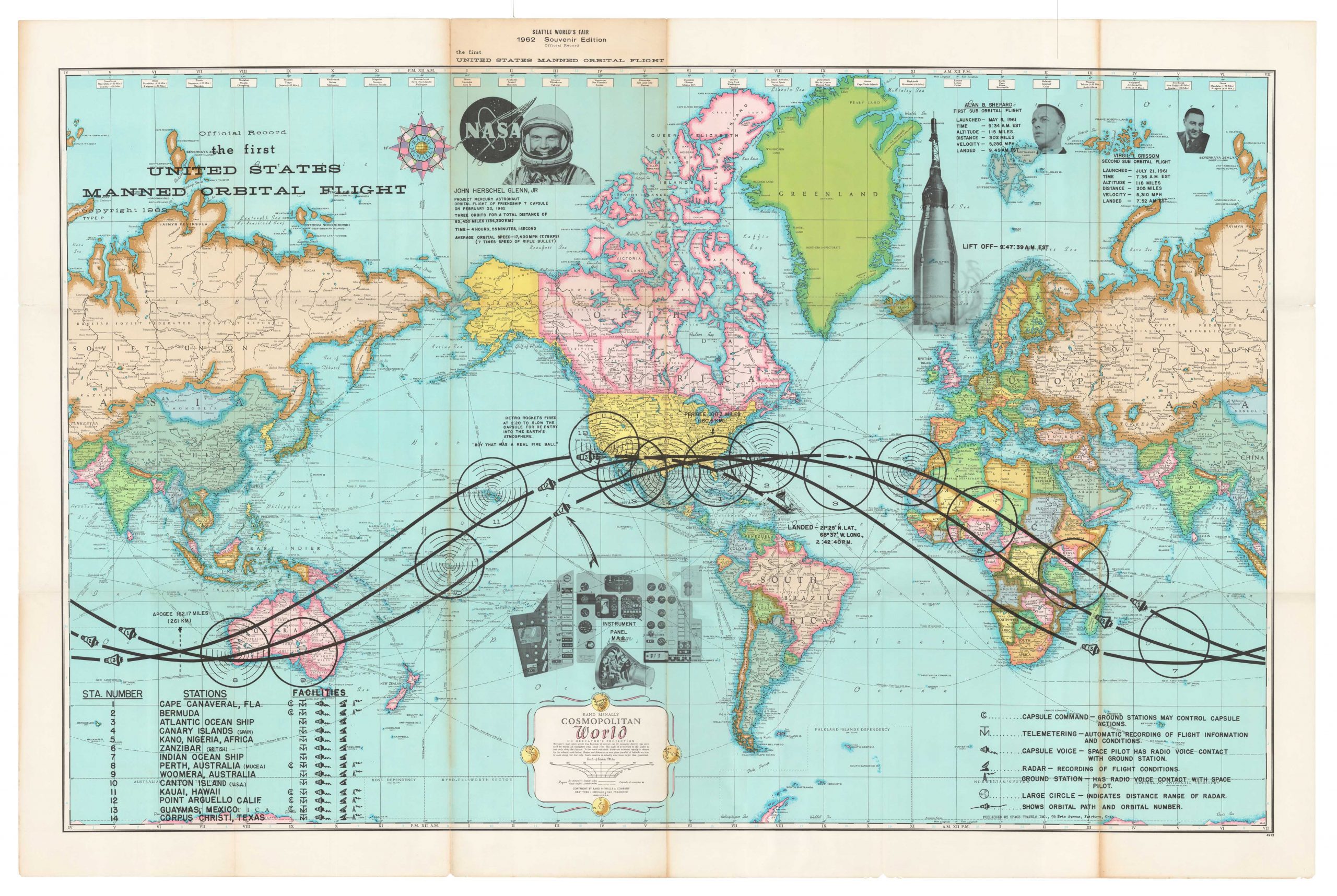
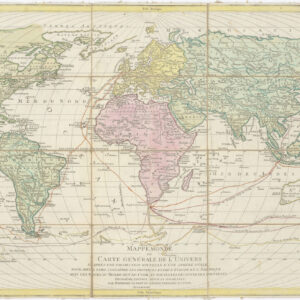
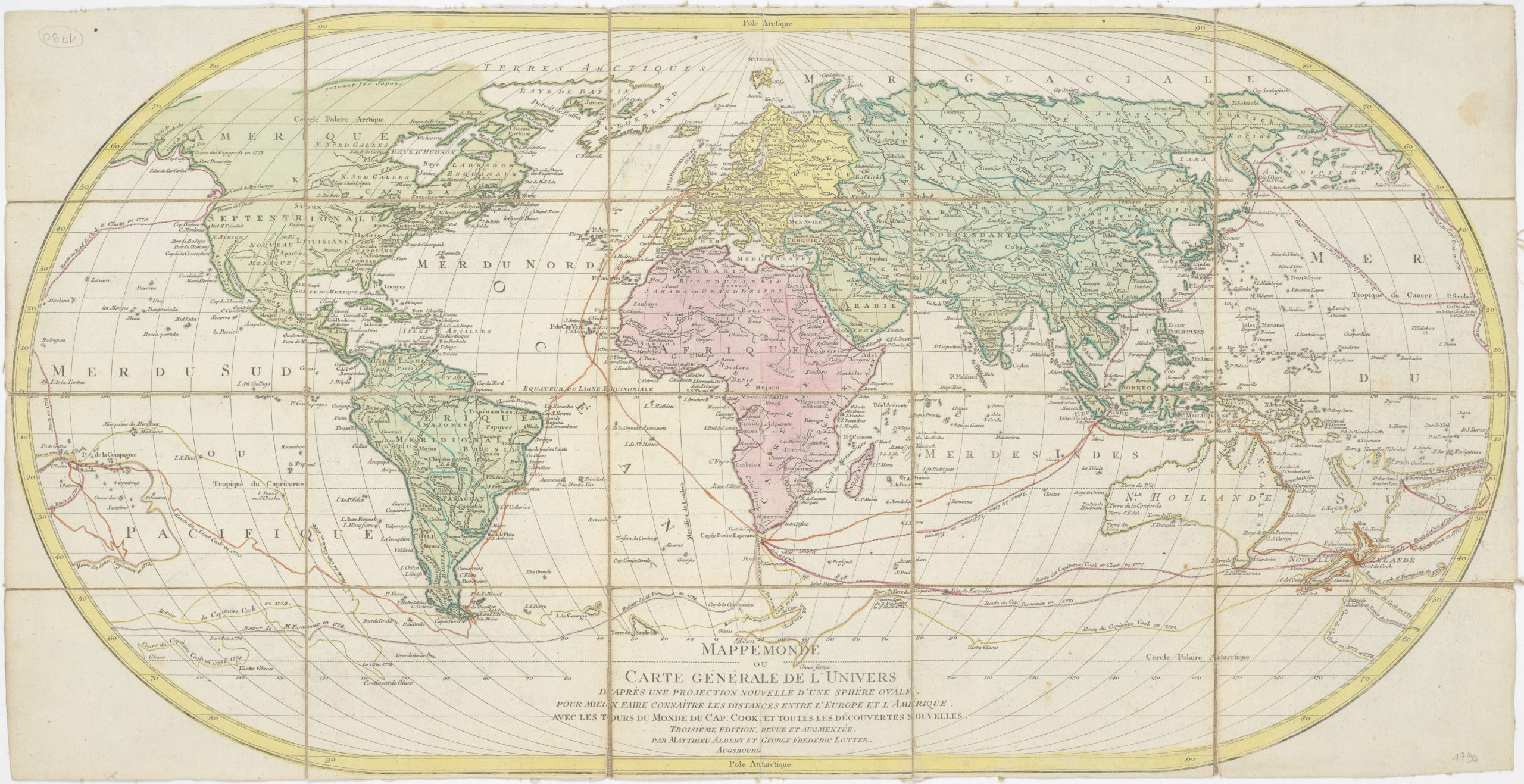
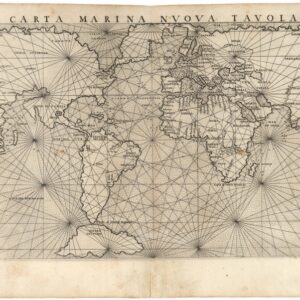
![[With Independent Texas] Mappemonde en deux hémisphères.](https://neatlinemaps.com/wp-content/uploads/2024/05/NL-02089_thumbnail-300x300.jpg)